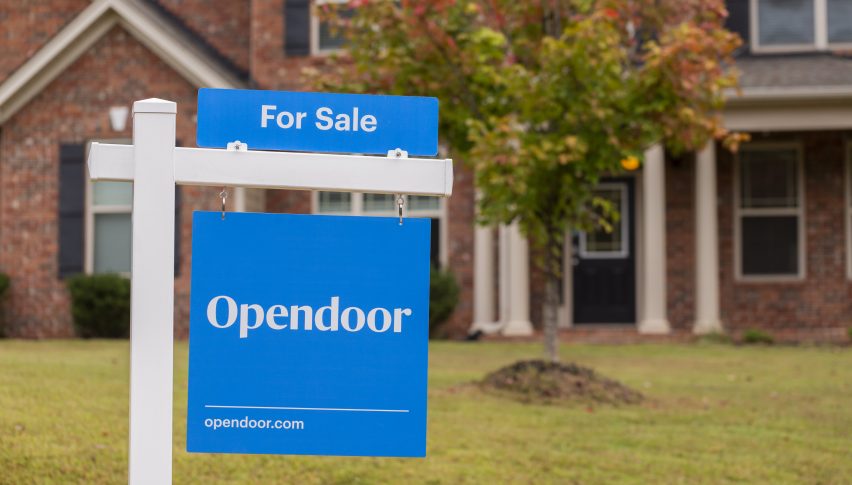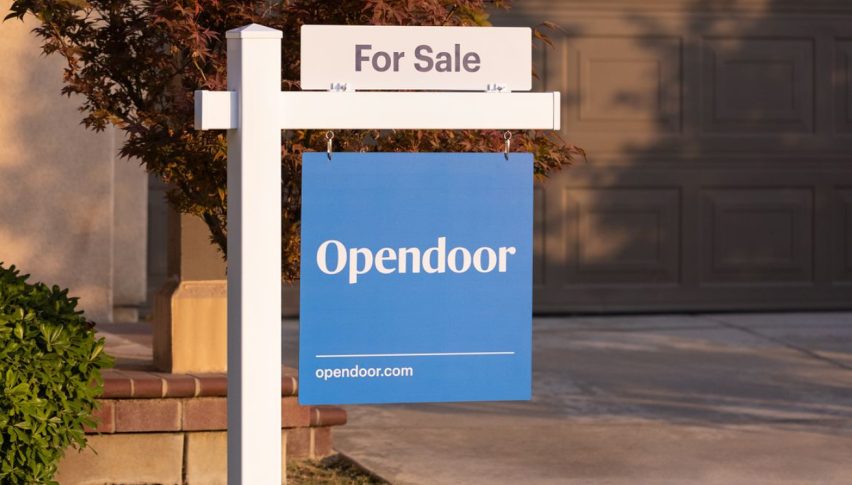OPEN Stock Rebounds Off Support as Powell’s Dovish Calm Lifts Housing Sentiment
The company is already facing a crucial test as insider selling picks up speed and investor euphoria starts to wane, following an incredible

Quick overview
- Opendoor Technologies experienced a remarkable 2,000% surge in stock price in 2025, driven by retail investor enthusiasm and social media momentum.
- Despite a recent bounce from support levels, the stock faces resistance at $8, and concerns about its underlying financial performance persist.
- A leadership reshuffle aims to restore credibility, while insider selling and external macroeconomic pressures add to the uncertainty surrounding the company's future.
- The outlook remains precarious, with the stock attracting speculative traders amid fears that the recent rally may be losing steam.
The company is already facing a crucial test as insider selling picks up speed and investor euphoria starts to wane, following an incredible run that made Opendoor one of the most talked-about recovery stories of 2025.
A Meteoric Rise Under Pressure
Opendoor Technologies (NASDAQ: OPEN) became a sensation this year after mounting one of the most impressive rebounds in the U.S. market. From just $0.50 in June, the stock catapulted to $10.85 in early October — a staggering 2,000% surge that reignited retail investor enthusiasm and positioned the company as a symbol of speculative revival in a challenging real estate environment.
Much of this explosive move was driven by social media momentum and retail traders, who turned the stock into a viral favorite. Within a single week, shares nearly doubled as buyers piled in on optimism that the property-tech platform could reinvent itself through technology and blockchain adoption.
However, by mid-September, the spectacular climb began to lose altitude. Weaker-than-expected quarterly results and profit-taking triggered a pullback, with shares dipping to around $7.04. A brief rally — sparked by news that Opendoor would integrate Bitcoin payments — faded quickly as broader real estate concerns resurfaced.
Support Holds, But Resistance Looms
Technically, the stock has found temporary support around the 20-day simple moving average (SMA) — a level that previously served as a springboard during the summer rally. Tuesday’s bounce of over 10% from this support followed dovish remarks by Fed Chair Jerome Powell, which boosted risk sentiment and weakened the U.S. dollar.
Powell acknowledged that “the labor market has demonstrated significant downside risk” and suggested that monetary policy may soon shift to a more neutral stance — comments that investors interpreted as a hint at possible rate cuts in early 2026. For rate-sensitive sectors like housing, this was a much-needed dose of optimism.
OPEN Chart Daily – Will the Buyers Push Above the 20 SMA?
Yet, for the uptrend to resume, buyers must push OPEN shares back above the $8 level, where the 20-day SMA could act as fresh resistance. A failure to do so might confirm that the recent rebound is more of a dead-cat bounce than a renewed breakout.
Financial Reality Beneath the Hype
While investor excitement fueled the rally, Opendoor’s underlying performance remains fragile. The company reported $5.15 billion in quarterly revenue, but profits are still elusive. Margins remain thin, with gross margin at 8.1%, net loss margin at –5.89%, and EBIT margin at –4.6%.
A debt-to-equity ratio of 3.46 underscores its leveraged position, while return on equity (–39.35%) and return on capital (–26.93%) highlight inefficiency. Despite strong top-line growth, the company still posted an operating loss of $13 million, raising doubts about its sustainability in a slowing property market.
Leadership Reset and Strategic Shift
Seeking to restore credibility, Opendoor announced a major leadership reshuffle. Co-founder Keith Rabois returned as board chair, while Kaz Nejatian, a former Shopify executive, took over as CEO.
The move — described internally as a “return to founder mode” — aims to sharpen focus and reintroduce operational discipline.
Rabois has promised new strategic guidance and an updated corporate roadmap during the Q4 earnings call in November, which could prove pivotal in calming market uncertainty.
Insider Selling and Short Pressure
As excitement cooled, so did insider confidence. Large stakeholders began reducing exposure, led by Access Industries, which offloaded 11.4 million shares worth $95.2 million — its second major sale in weeks.
Meanwhile, hedge fund manager Martin Shkreli declared the stock “an obvious short,” claiming to have gathered internal and competitor data that painted a bleak picture of Opendoor’s business model. His public short disclosure triggered a 16% one-day selloff and amplified volatility across the trading week.
External Headwinds and Market Shifts
Beyond company-specific issues, broader macroeconomic forces have also weighed on Opendoor’s outlook. Elevated interest rates have stalled the housing market, curbing transaction volumes — a key revenue driver for the company.
Additionally, shifting capital flows toward commodities and precious metals have drained liquidity from speculative tech plays. The potential upside lies in Federal Reserve easing or a rebound in property demand should borrowing costs begin to decline.
Outlook: Fragile Momentum in Focus
As it stands, Opendoor’s story remains one of high risk and high reward. The stock continues to attract aggressive traders betting on volatility rather than fundamentals. With the 20-day SMA acting as a battleground between bulls and bears, the coming weeks will determine whether this once-unstoppable rally still has fuel — or if the hype has finally met its ceiling.
- Check out our free forex signals
- Follow the top economic events on FX Leaders economic calendar
- Trade better, discover more Forex Trading Strategies
- Open a FREE Trading Account

